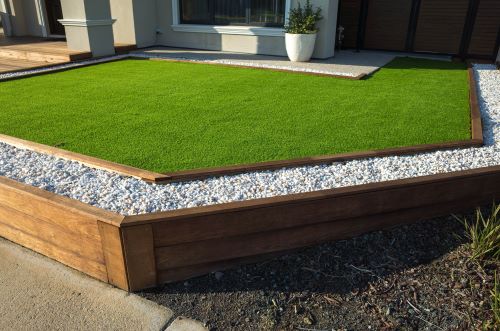
Sustainable Outdoor Solutions: Water-Saving Landscaping
Creating a beautiful outdoor space while conserving water is possible through water-saving landscaping techniques. Let’s explore strategies that enhance your landscape’s allure while reducing water usage, promoting sustainability and eco-friendliness.
Xeriscaping: Optimal Water Efficiency
Xeriscaping involves designing landscapes that require minimal irrigation. By incorporating drought-resistant plants native to your region, you create a water-efficient ecosystem. These plants are adapted to local conditions, reducing the need for excessive watering while maintaining visual appeal.
Efficient Irrigation Systems
Installing smart irrigation systems is essential for water-saving landscaping. Drip irrigation, soaker hoses, or weather-based controllers deliver water directly to plant roots, minimizing evaporation and runoff. These systems ensure efficient water distribution, preventing overwatering and water wastage.
Mulching for Water Retention
Mulching is a simple yet effective method to conserve soil moisture. Applying a layer of mulch around plants helps regulate soil temperature, reduces evaporation, and suppresses weed growth. Organic mulches like wood chips or compost also improve soil health over time.
Grouping Plants by Water Needs
Strategically grouping plants with similar water requirements optimizes water usage. By creating hydrozones based on plant needs, you can irrigate more efficiently, delivering the right amount of water to each area. This zoning approach minimizes water waste and promotes healthier plant growth.
Utilizing Rainwater Harvesting
Capturing rainwater for landscape use is an eco-friendly practice. Installing rain barrels or cisterns allows you to collect and store rainwater for irrigation purposes. This harvested water reduces reliance on municipal sources, contributing to water conservation efforts.
Explore Water-Saving Landscaping for an in-depth look at transforming your outdoor space sustainably. The guide provides insights into creating water-efficient landscapes, offering tips and strategies to curate a beautiful, eco-conscious outdoor environment.
Selecting Water-Wise Plants
Choosing drought-tolerant plants is key to water-saving landscaping. Succulents, native grasses, and Mediterranean herbs are examples of water-wise plants that thrive in low-water conditions. These plants add color, texture, and biodiversity to your landscape while conserving water.
Soil Improvement and Water Absorption
Improving soil quality enhances its ability to retain water. Adding organic matter like compost or vermicompost to soil improves its structure, allowing better water absorption and retention. Healthy soil supports plant growth while reducing the need for frequent watering.
Regular Maintenance and Monitoring
Regular landscape maintenance and monitoring are crucial for water-saving efforts. Check for leaks, adjust irrigation systems seasonally, and remove invasive plants or weeds that compete for water resources. Pruning and proper plant care also optimize water usage.
Community and Environmental Impact
Adopting water-saving landscaping practices contributes to broader environmental conservation. Reduced water consumption positively impacts local ecosystems, preserves water resources, and sets an example for sustainable living within communities.
By embracing water-saving landscaping techniques, you create an outdoor oasis that’s not only visually appealing but also environmentally responsible. Implementing these strategies allows you to enjoy a lush landscape while actively participating in water conservation efforts.


